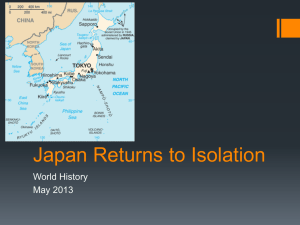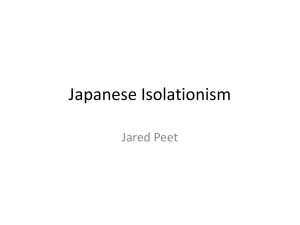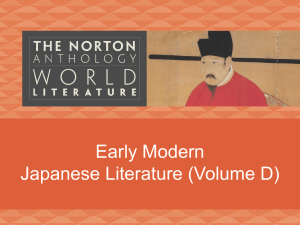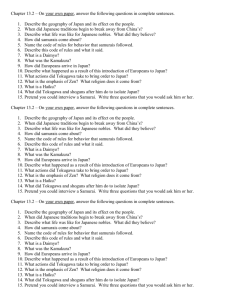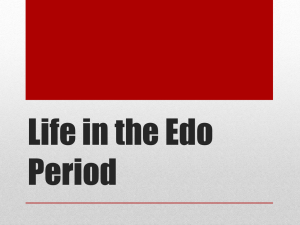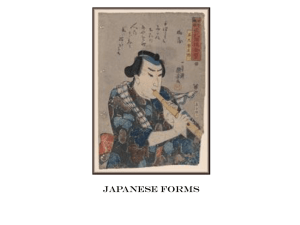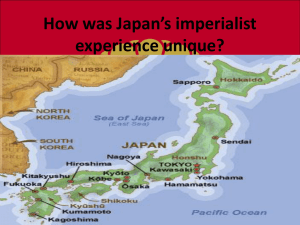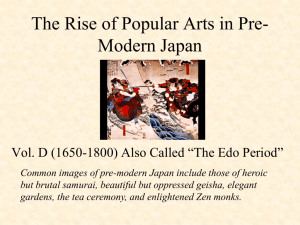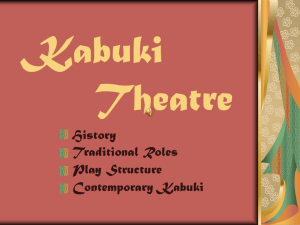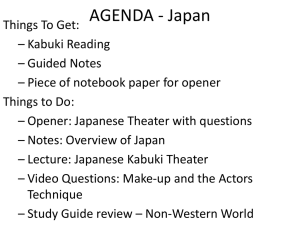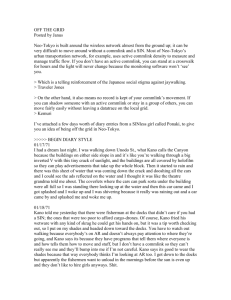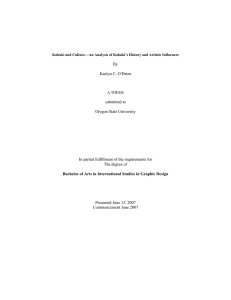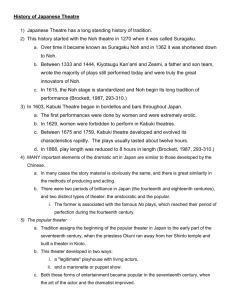Advancements of the Tokugawa Era
advertisement
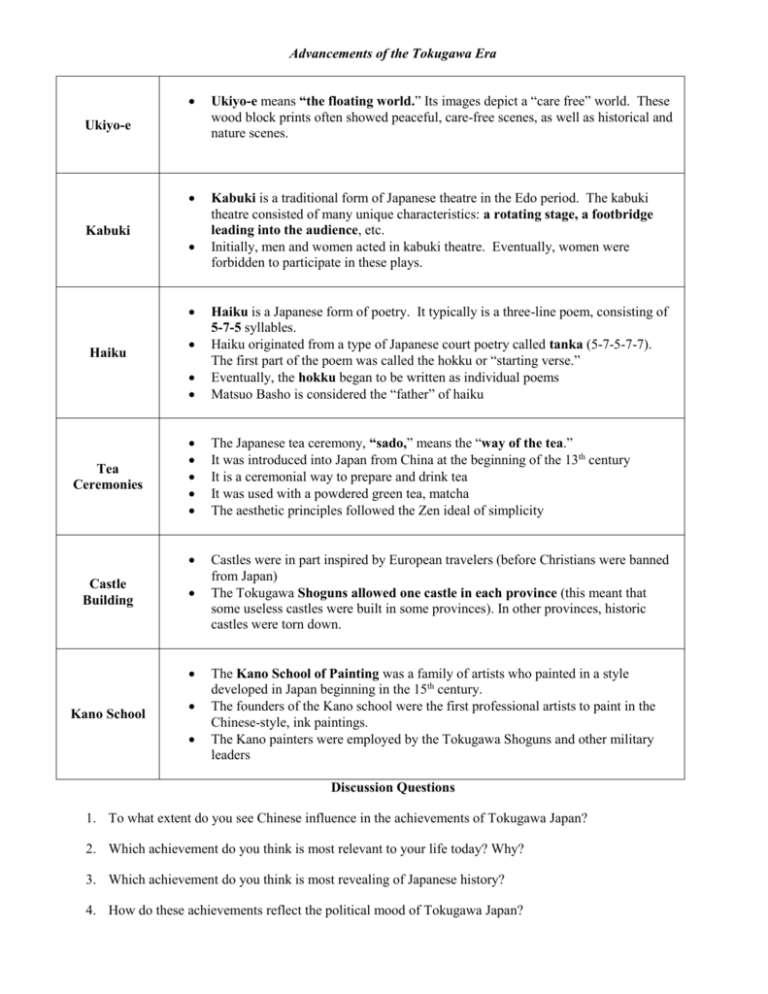
Advancements of the Tokugawa Era Ukiyo-e means “the floating world.” Its images depict a “care free” world. These wood block prints often showed peaceful, care-free scenes, as well as historical and nature scenes. Kabuki is a traditional form of Japanese theatre in the Edo period. The kabuki theatre consisted of many unique characteristics: a rotating stage, a footbridge leading into the audience, etc. Initially, men and women acted in kabuki theatre. Eventually, women were forbidden to participate in these plays. Ukiyo-e Kabuki Haiku Tea Ceremonies Castle Building Haiku is a Japanese form of poetry. It typically is a three-line poem, consisting of 5-7-5 syllables. Haiku originated from a type of Japanese court poetry called tanka (5-7-5-7-7). The first part of the poem was called the hokku or “starting verse.” Eventually, the hokku began to be written as individual poems Matsuo Basho is considered the “father” of haiku The Japanese tea ceremony, “sado,” means the “way of the tea.” It was introduced into Japan from China at the beginning of the 13th century It is a ceremonial way to prepare and drink tea It was used with a powdered green tea, matcha The aesthetic principles followed the Zen ideal of simplicity Castles were in part inspired by European travelers (before Christians were banned from Japan) The Tokugawa Shoguns allowed one castle in each province (this meant that some useless castles were built in some provinces). In other provinces, historic castles were torn down. Kano School The Kano School of Painting was a family of artists who painted in a style developed in Japan beginning in the 15th century. The founders of the Kano school were the first professional artists to paint in the Chinese-style, ink paintings. The Kano painters were employed by the Tokugawa Shoguns and other military leaders Discussion Questions 1. To what extent do you see Chinese influence in the achievements of Tokugawa Japan? 2. Which achievement do you think is most relevant to your life today? Why? 3. Which achievement do you think is most revealing of Japanese history? 4. How do these achievements reflect the political mood of Tokugawa Japan? Name:__________________________ Mr. Grady World History I Achievements of Tokugawa Japan: Practice Multiple Choice Questions _____1. The traditional haiku poem consists of syllables of: a. 7-5-5 b. 5-7-5 c. 5-5-7 d. 7-7-5 _____2. Ukiyo-e translates to: a. The simple world b. The floating world c. Wood-block printing d. One who serves _____3. Japanese tea ceremonies reflect the beliefs of: a. Confucianism b. Legalism c. Christianity d. Zen Buddhism _____4. The most famous haiku poet is: a. Minamoto Yoritomo b. Matsuo Basho c. Li Bo d. Shotoku Taishi _____5. Which of the following is true about Kabuki theatre? a. Women were eventually banned from performing b. English is generally spoken c. It originated in China d. Emperors could attend shows
